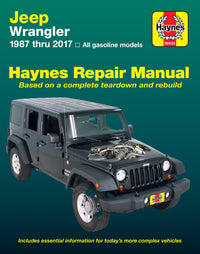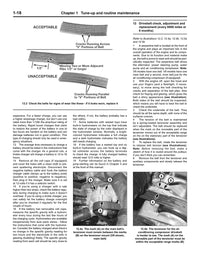The most common causes of calls reported by the roadside assistance providers vary slightly each year, but averaged out over the last few years, the top ten causes of breakdowns are as follows:
1) Dead or Weak Battery
Batteries do get old and less efficient, typically failing about every 5 years in normal use. Extremes of heat or cold can accelerate this, as can running the battery down and repeatedly recharging it. To help to avoid this problem:
- Check the battery terminals regularly, make sure that they’re tight and keep them free from corrosion. Most auto parts stores sell battery terminal protector spray, or you can use petroleum jelly or a dab of grease instead.
- Keep the top of the battery clean and dry.
- If you make lots of short trips, starting the car frequently, take your car for a long drive every once in a while to help the alternator fully charge the battery.
- Make sure that all the electrical equipment (lights, heater blower, rear defroster, etc) is turned off before you try to start the engine.
- Check the alternator belt for proper tension once in a while.
- At the first sign of trouble, such as slow starting, or dim headlights have the battery tested. Test it at least once a year regardless.
2) Flat Tire, or Other Tire/Wheel Damage
It is impossible to avoid every flat tire caused by random debris in the road. You can avoid premature wear, blowouts and the tire coming off the bead with proper precautions though. To help to avoid these problems:
- Check the tire pressures and the condition of the tires regularly. Don’t forget the spare if you have one.
- Make sure that if you’re carrying a heavier load you adjust the tire pressures to the recommended ‘full-load’ pressures, and that you return them to normal when you’ve unloaded.
- If you ‘curb’ a wheel when parking or driving, check the condition of the wheel and tire as soon as possible afterward.
- Consider carrying a can of tire ‘instant repair’ foam.
- Make sure that the jack, lug wrench, and (where applicable) the tool for locking wheel bolts, are in the car and that you know how to use them.
3) Alternator Faults
The alternator’s job is to charge the battery, and if the alternator fails, the battery will soon go dead trying to run the car on its own. Early warning signs of an alternator or voltage regulator going bad include:
- Weak battery problems and dim headlights when the engine is running over.
- A squealing sound under the hood at certain RPM or when switching on high load accessories, which may indicate a slipping alternator belt.
- A flickering charging warning light (usually orange) with the engine at idle that goes out when revved.
- If the charging warning light comes on when you’re driving, the system is no longer charging (or now over charging) so stop ASAP and figure out why.
4) Starter Motor Failure
Some cars can go 250,000 miles without a starter problem, but some have a hard time making it to 50,000. There is not much in the way of preventive starter maintenance that can be done, besides making sure all nuts and bolts are tight once a year. The following signs are likely to indicate that the starter motor has failed or is failing:
- Metallic grinding noises when trying to start the engine.
- The engine turns more slowly than usual when you try to start it (might also indicate a battery problem).
- A click can be heard from under the hood, but the engine doesn’t turn over when the key is turned to the ‘start’ position (might also indicate a battery problem).
5) Distributor Cap or Ignition Rotor Problems
Most modern cars don’t have a distributor cap, so this may not apply to your car if it was made in the 21st century or if it has a diesel engine. If you have one, make sure that the distributor cap and rotor arm are checked when your car is serviced. The telltale signs of a problem include:
- Misfiring of the engine, especially when accelerating or driving uphill.
- Rough running, especially in damp or wet weather.
- Difficulty starting the engine, especially in damp weather.
6) Running Out of Gas or Filling With the Wrong Type of Fuel
Everyone runs out of gas at least once in their lives and it is hard to avoid completely. Filling a diesel-powered car with gasoline is much less common, but does still happen occasionally. Both of these problems are easily avoidable, provided you take the following precautions:
- Fill up with fuel before any long journey, and before it gets cold and dark outside.
- Keep an eye on your fuel gauge, and don’t wait until the warning light comes on before filling up if you are in an unfamiliar area.
- If you’re traveling on a rural road where fuel stations are rare, consider stopping at any station you see when the gauge gets to 1/4 tank.
- If you’re driving a new car, a rental, or a borrowed car, make sure you know what type and grade of fuel it takes.
- Putting regular in a car that takes premium is not disastrous, but putting gas in a diesel engine is. Don't start the car, roll it away from the pump and find a mechanic to drain the tank.
7) Broken Clutch Cables
This only applies to cars with a manual gearbox, and even some of those have a hydraulic clutch which doesn’t use a cable. If the clutch cable breaks, you won’t be able to disengage the clutch. Don't panic, you should still be able to nudge the shifter into neutral without damage and roll to a stop. To avoid trouble, make sure that the clutch cable is checked and lubricated when getting your oil changed and tires rotated. Telltale signs of a problem in the near future include:
- The clutch feels ‘strange’ when you press the clutch pedal, or takes more effort
- The pedal seems to be higher or lower than normal when in its rest position.
- The gears grind when changing gear, which could be a sign of a stretched cable not disengaging properly.
8) Fouled Spark Plugs
This only applies to older cars or modern cars with a lot of miles on them. Too rich of a mixture (too much fuel not enough air in the engine) can cause the plugs to get fuel fouled and not fire. A worn engine with loose rings or bad valve stem seals can foul them when oil gets into the combustion chamber. To help to avoid problems, new spark plugs should be fitted at the intervals recommended by the car manufacturer, or about every 50,000 miles on modern cars. The telltale signs of a problem include:
- Misfiring of the engine, especially when accelerating or driving uphill.
- Rough running at idle that smooths out as the car warms up.
- Difficulty starting the engine, especially in damp weather.
9) Bad Ignition Wires/Coil Packs
Older cars have a thick wire that carries high voltage electricity to the spark plugs from the coil or distributor. Most modern cars have a coil directly over the spark plug. both can deteriorate with age and heat, and electricity can leak out, as strange as that sounds. The telltale signs of a problem include:
- Misfiring of the engine, especially when accelerating or driving uphill.
- Difficulty starting the engine, especially in damp weather.
- Rough running in damp or wet weather.
10) Leaking Cylinder Head Gasket
A leaking cylinder head gasket is a big problem, and major work on the engine is required to fix it, but at least it isn't a cracked head or block. There’s little that can be done to avoid this problem, except maintaining your cooling system properly. Check the level of coolant and top up when needed. Keep the front of the radiator free of road debris and bugs. If your temperature gauge goes into the red, or the warning light comes on, stop ASAP to avoid overheating. The telltale signs of a head gasket problem include:
- White smoke out the exhaust.
- Reduced power.
- Oil or coolant the needs constant refilling.
- Oil in the coolant – usually shows itself as a frothy ‘milkshake’.
- Coolant in the oil – usually shows itself as a frothy ‘milkshake’.

















